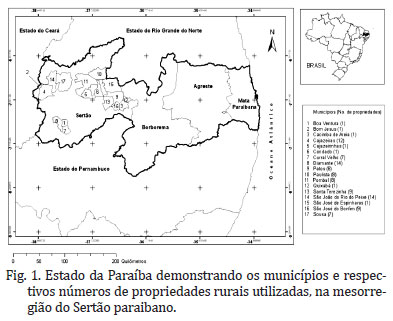The aim of this investigation was to determine the seroprevalence of Brucella ovis in sheep flocks and individual sheep in the Sertão mesorregion, Paraíba state, Northeastern Brazil, as well as to identify risk factors. Blood samples were collected from 1,134 sheep from 103 flocks in 17 counties. For the serological diagnosis of B. ovis infection the agar gel immunodiffusion test (AGID) was carried out. A flock was considered positive when there was at least one seropositive animal. Of the 103 flocks used, 21 (20.39%) presented at least one seropositive sheep, and of the 1,134 sheep examined 59 (5.20%) seropositive animals were diagnosed. Cleaning of facilities (odds ratio = 7.13; 95% CI=1.56-32.47; p=0.011) and purchase of animals (odds ratio = 6.06; 95% CI=1.39-26.48; p=0.017) were identified as risk factors. Based on the risk factor analysis, it is recommended the diagnosis of B. ovis infection prior to purchase of sheep and the periodic cleaning of the facilities on the farm.
Brucellosis; Brucella ovis; sheep; epidemiology; Semiarid of Brazil





